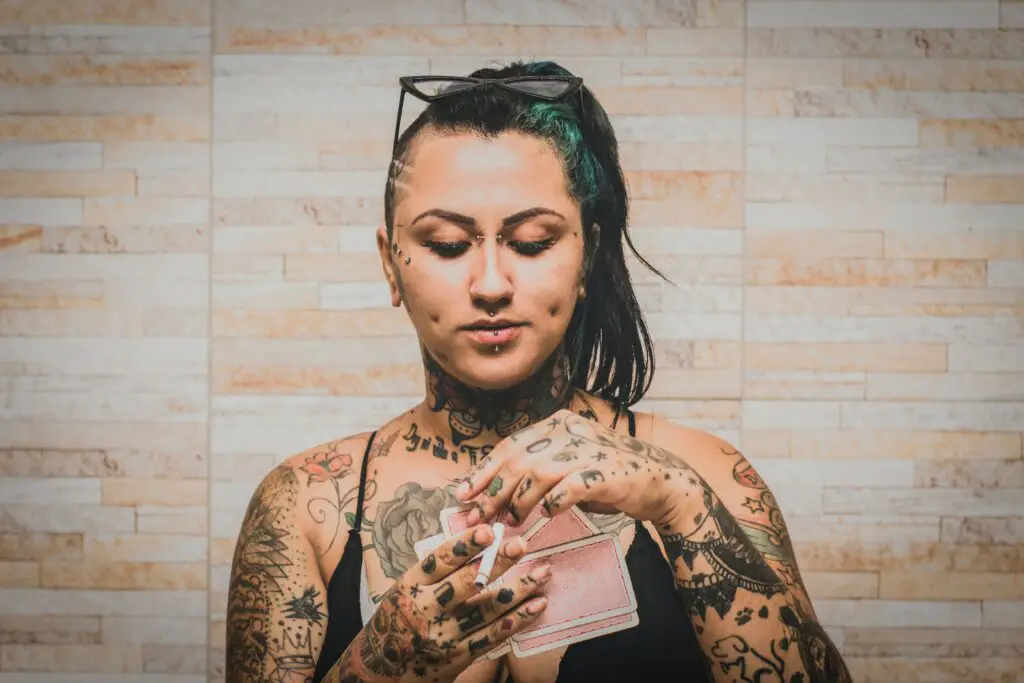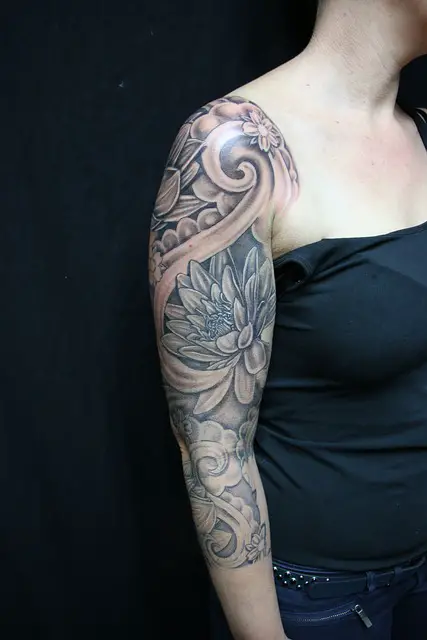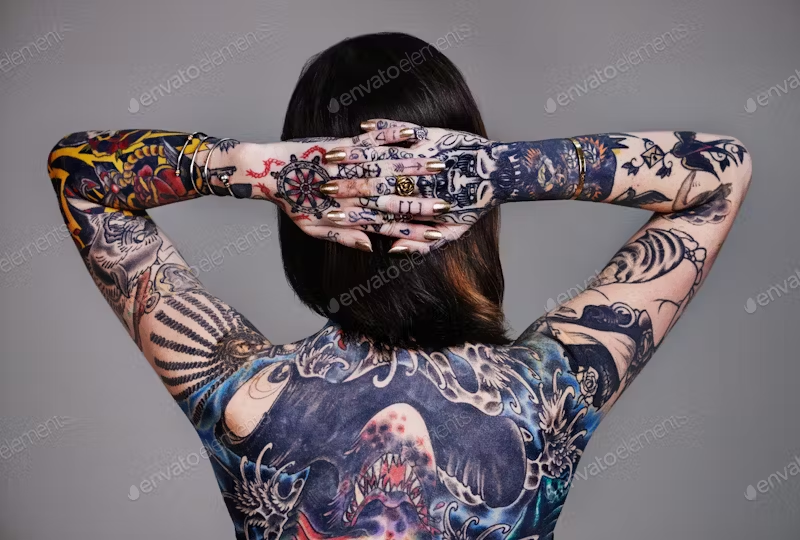Yellow bruising, particularly around tattoos, is a phenomenon that raises questions about its definition, causes, and reactions. Bruises, in general, occur when the skin experiences trauma or impact, leading to discoloration. When bruises take on a yellow hue, it signifies changes in the healing process. In the context of tattoos, individuals may notice yellow bruising around the freshly inked area, prompting curiosity and concern.
Question: yellow bruising around tattoo?
Yellow bruising is a stage in the bruise healing process, indicating the breakdown of blood and its byproducts. As a tattoo heals, the body’s response to the trauma caused during the application may manifest as yellow discoloration, often referred to as a hematoma.

Yellow Bruising Around Tattoos:
When individuals undergo the tattooing process, especially on fleshy areas, yellow bruising can be a common occurrence. The body’s reaction to the tattoo needle penetrating the skin may lead to hematoma formation, presenting as yellowish discoloration around the tattooed region.
Common Causes and Reactions:
Understanding the causes of yellow bruising is crucial for individuals with fresh tattoos. Factors such as body structure, location of the tattoo, and individual differences contribute to the variability in bruising. Despite its prevalence, yellow bruising is generally considered a normal part of the healing process, with many individuals experiencing its resolution within the first week of getting a tattoo.
Contents
Medical Perspective on Tattooing
Tattooing is a complex process with medical implications that involve both the application procedure and subsequent skin reactions.
Scientific Explanation of the Tattooing Process:
Tattooing involves the use of needles that puncture the skin’s outer layer, the epidermis, reaching the deeper dermis layer. The tattoo machine deposits ink particles into the dermis, where they become encapsulated by cells, creating a permanent design.
Impact of Tattoo Application on Skin:
The tattoo application process breaches the skin, leading to various skin responses. Redness, swelling, tenderness, and possible itching are common side effects. The skin may also undergo a healing process involving peeling and scabbing.
Formation of Blood Clots and Bruising:
The tattooing process can cause minor trauma, leading to blood vessel damage and the formation of blood clots. This trauma may result in bruising, especially around the tattooed area. Bruising is a natural response as the body works to repair the affected blood vessels, and it is often part of the normal healing process.
Understanding the scientific intricacies of the tattooing process provides insights into the skin’s reaction and the occurrence of bruising, emphasizing the importance of proper aftercare to support the healing process.

Understanding Variability in Bruising
Bruising, the discoloration of the skin resulting from blood leakage, exhibits variability influenced by several factors.
Factors Influencing Bruising:
Bruising can be influenced by various factors, including the intensity of the trauma. Blunt trauma is a common cause, where force damages blood vessels, leading to blood leakage. Additionally, individuals with bleeding disorders, such as hemophilia, may experience more pronounced bruising due to impaired clotting.
Body’s Unique Structure:
The unique anatomical and physiological characteristics of an individual’s body play a role in bruising variability. Skin thickness, underlying tissues, and the density of blood vessels can differ, impacting the severity and appearance of bruises. Factors such as age and overall health also contribute to the body’s response to trauma.
Location on the Body:
The location where trauma occurs greatly influences the development and visibility of bruises. Areas with more vascularized tissues, like the face and extremities, may exhibit more noticeable bruising. Conversely, bony prominences or areas with thicker skin may show less prominent discoloration. Understanding the body’s varied responses in different regions aids in assessing the severity of trauma.
Treating Yellow Bruising
When dealing with yellow bruises, a proactive approach to treatment can aid in faster healing. Here are some tips and tricks along with signs indicating the recovery process:
Tips and Tricks for Healing:
Apply Healing Cream:
Using a specialized healing cream can accelerate the recovery of yellow bruises. These creams often contain ingredients that promote circulation, reduce inflammation, and alleviate discomfort.
Cold Compress:
Applying a cold compress within the first 24-48 hours can help reduce swelling and minimize the size of the bruise. This vasoconstrictive effect aids in preventing further blood leakage into the surrounding tissues.
Arnica Gel or Ointment:
Arnica, a natural remedy, is known for its anti-inflammatory properties. Applying arnica gel or ointment to the bruised area may promote healing and diminish discoloration.
Signs of Healing Bruises
Color Changes:
Bruises change color as they heal. Initially, they may appear red or purple, transitioning to green or yellow. The final stage involves the bruise fading away, indicating resolution.
Reduced Tenderness:
As the bruise heals, the tenderness and sensitivity in the affected area should gradually diminish. Reduced pain upon touch is a positive sign of healing.

Resolution of Swelling:
Healing bruises typically exhibit a reduction in swelling. The affected area may return to its normal size as the inflammatory response subsides.
Remember to consult a healthcare professional if bruising persists, worsens, or is accompanied by severe pain, as it may indicate an underlying issue.
Conclusion: Understanding Yellow Bruising Around Tattoos
Yellow bruising around a new tattoo is a common occurrence and is generally considered a normal part of the healing process. This bruising can manifest in various colors, ranging from bright yellow to dark blue or brown. It is primarily caused by the trauma inflicted during the tattooing process, leading to bruising and potential discoloration.
While the appearance of yellow bruising may cause concern, it is essential to recognize that tattoos involve penetrating the skin with a needle, contributing to the body’s natural healing response. As the healing progresses, the bruising will undergo color changes, eventually fading away.
Encouragement for Patience in the Healing Process
Patience is key during the tattoo healing process. It is normal for tattoos to go through different stages, including bruising and color variations. Allow your body the time it needs to heal, and avoid unnecessary stress about the temporary discoloration. Following proper aftercare instructions provided by your tattoo artist, such as keeping the area clean and avoiding excessive sun exposure, can aid in a smoother healing journey.
Remember, each individual’s healing process may vary, and the body’s natural mechanisms will work to restore the tattooed skin to its vibrant appearance. Embracing patience and adhering to aftercare guidelines will contribute to a successful and aesthetically pleasing outcome.





